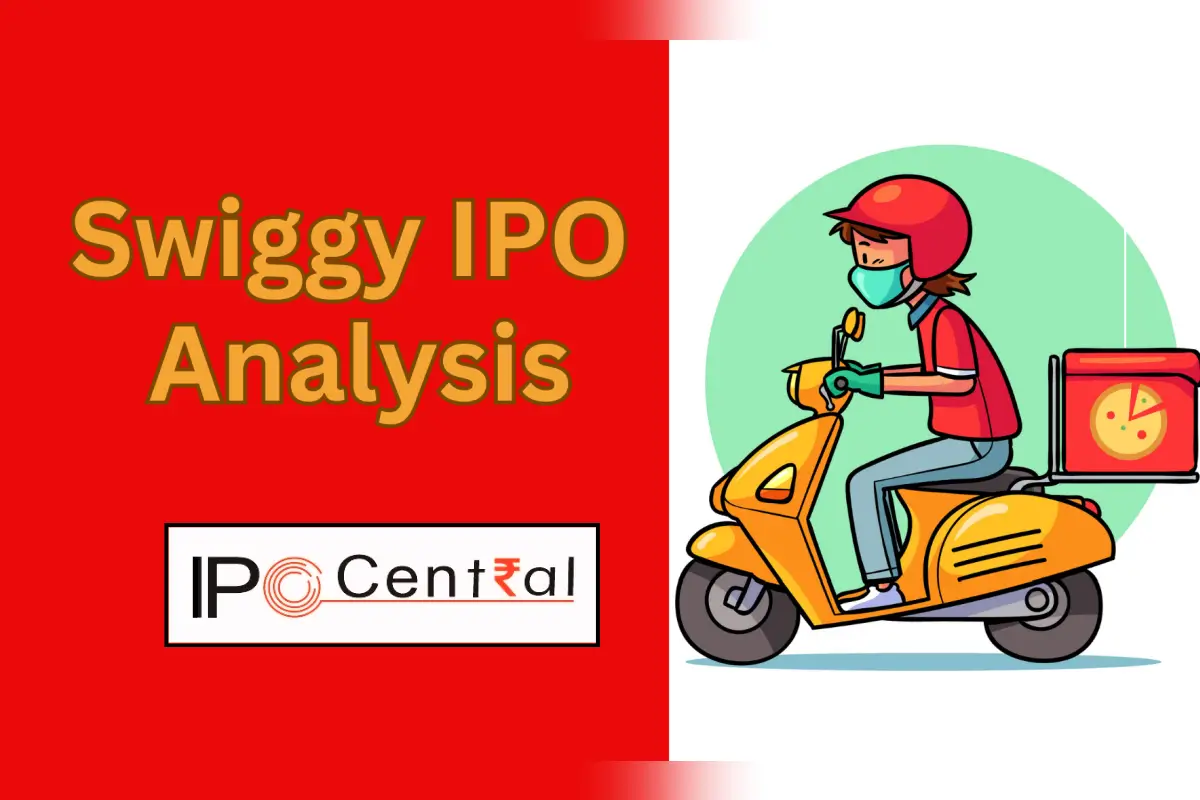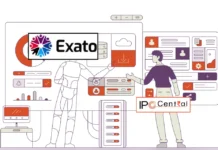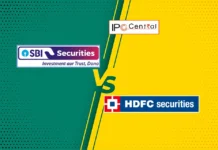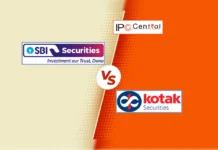Swiggy, one of India’s leading online food delivery platforms, is all set to launch its IPO, sparking significant interest among investors. Swiggy IPO analysis will provide comprehensive insights into the company’s business overview, strengths, risks, and market positioning. The aim is to assist investors in making informed decisions regarding this IPO.

Table of Contents
Swiggy IPO Analysis: Industry Overview
The Indian food services market, which includes online food delivery and out-of-home consumption, was valued at INR 5,60,000 crore (USD 70 billion) in 2023. The online food delivery segment is the fastest-growing area, with an expected growth rate of 17-22% from 2023 to 2028. In out-of-home consumption, the organized segment is projected to grow at 15-18%, while online dining-out is anticipated to surge by 46-53%, driven by increased organized restaurant supply.
Additionally, quick commerce models are rapidly transforming the retail landscape, particularly for urban consumers. This segment is expected to grow at a CAGR of 60-80%, potentially reaching INR 2.3-4.2 lakh crore (USD 29-53 billion) by 2028, up from INR 22,400 crore (USD 2.8 billion) in 2023. In the short term, growth rates could be even higher at 80-100% annually over the next two years due to rising user adoption and expansion into new areas.
Swiggy IPO Analysis: Company Overview
Swiggy has quickly become one of India’s leading online food and grocery delivery platforms. Initially focused on food delivery, it has expanded its services to include grocery delivery, package delivery, and dining experiences through offerings like Instamart and Dineout. Swiggy operates primarily as a B2C marketplace, allowing users to easily browse, order, and pay for food, groceries, and household items while connecting consumers with restaurant and merchant partners for order fulfilment. It has five key business segments that support its diverse offerings.
- Food Delivery
- Out-of-home Consumption (including dining and events)
- Quick Commerce (on-demand grocery delivery)
- Supply Chain and Distribution (B2B services)
- Platform Innovations (new initiatives like Swiggy Genie)
In addition to serving consumers, Swiggy provides business solutions to its partners, including analytics tools and an extensive delivery network. As of 30 June 2024, Swiggy had 11.27 crore transacting users.
Business Model
Swiggy’s revenue streams come primarily from:
- Delivery and Subscription Fees: Swiggy charges a commission fee from restaurants and a nominal delivery charge from customers.
- Instamart: Its grocery delivery service, Instamart, operates on a hyperlocal model, ensuring quick deliveries in major urban areas.
- Dineout and Genie: Dineout offers customers discounts on dining out, while Genie provides package delivery services.
This multi-vertical approach positions Swiggy as a comprehensive service provider, offering an array of conveniences to urban consumers.
Read Also: Sagility India IPO GMP, Price, Date, Allotment
Swiggy IPO Analysis: Strengths
Swiggy has leveraged several strategic strengths to become a leader in the Indian market:
Extensive Delivery Network
The company operates a robust logistics system with over 20 lakh delivery partners, ensuring timely deliveries across more than 500 cities. This extensive network allows Swiggy to maintain an average delivery time of about 30 minutes in urban areas.
Diverse Restaurant Partnerships
Swiggy partners with over 200,000 restaurants, offering a wide array of cuisines from local street food to international dishes. This diversity caters to various customer preferences and enhances user engagement
Strong Employee Training Programs
The company invests in Project Next, which aims to upskill delivery partners and transition them into the role of sales executives for restaurant onboarding.
Financial Growth and Market Position
Swiggy has reported a 36% increase in operating revenue and a 44% reduction in net loss for the fiscal year ending March 31, 2024. The company is also preparing for an IPO that could significantly boost its market valuation and operational capabilities.
Innovative Services
Swiggy has diversified its offerings through services like Instamart, which provides grocery deliveries within minutes. This expansion positions Swiggy favourably against competitors like Zomato, particularly in urban areas.
Swiggy IPO Analysis: Financial Overview
Swiggy has shown strong revenue growth but faces challenges in achieving profitability. Key financial highlights include:
- Revenue Growth: Swiggy’s revenue from operations is growing at a CAGR of 25.39%, increasing from INR 5707.90 crore in FY 2022 to INR 11,247.39 in FY 2024, largely driven by its food and grocery delivery segments.
- Cost Structure: Despite growing revenues, Swiggy’s high costs, particularly in logistics and delivery personnel, impact its profit margins.
- EBITDA and Cash Flow: Swiggy has worked to improve its EBITDA, its EBITDA margin improved from (59.78%) in FY 2022 to (16.52%) in FY 2024, focusing on optimizing delivery and reducing discounts. However, capital expenditures on technology and market expansion remain high.
Read Also: Ashish Kacholia, Capri Global Holdings Lead Quadrant Future Tek Pre-IPO Round
Swiggy IPO Analysis: Risks and Threats
While Swiggy presents a promising investment, several risks should be taken into account:
Consistent Financial Losses
Swiggy has not yet reached profitability, reporting a net loss of INR 2,350.24 crore in fiscal 2024, down from INR 4,179 crore the previous year. For the quarter ending June 30, 2024, it recorded a net loss of INR 611 crore, despite revenue rising to INR 11,247.39 crore from INR 8,264.60 crore in the same period last year.
High Attrition Rates
The company has experienced a high attrition rate, particularly among its frontline and call centre staff, which stood at 53.74% in fiscal 2024. Such turnover can disrupt operations and affect service quality.
Intense Competition
Swiggy operates in a highly competitive environment dominated by rivals like Zomato and Blinkit. Zomato has already achieved profitability, boasting a net income of INR 351 crore in FY 2024, while Swiggy’s losses continue to mount.
Financial Obligations
Swiggy noted that its subsidiaries Scootsy and Supr Infotech are currently operating at a loss, and INR 164.80 crore from the issue will be used for repayment of Scootsy’s borrowings.
Dark Store Expansion Risks
The IPO proceeds will be allocated to expanding Swiggy’s dark store network (quick commerce division). However, this venture faces uncertainties around market acceptance and profitability. Of the total funds, INR 559.10 crore will be dedicated to expanding the dark store network, while INR 423.30 crore will be allocated to licensing fees.
Swiggy IPO Analysis: Growth Strategy
Swiggy’s growth strategy centers on increasing its market share in both food and grocery delivery, while also expanding ancillary services. Here are the key components of this strategy:
Capital Utilization
Swiggy plans to raise approximately INR 11,300 crore through its IPO. The funds will be strategically allocated to several key areas:
- Expansion of Dark Stores
- Technology and Infrastructure Investment
- Debt Repayment
Market Expansion
Swiggy plans to expand its presence in smaller cities to enhance delivery capacity across India, aiming to tap into new customer bases and increase market share in the rapidly growing online food delivery sector, projected to grow at a CAGR of 15.98% from 2024 to 2029.
Expansion of Subscription Services
Swiggy One, the company’s subscription service, is designed to enhance customer loyalty by offering perks like free deliveries and discounts. Expanding the subscriber base could help Swiggy stabilize its revenue and reduce dependency on one-time orders.
Expansion into Dining Services
Swiggy’s acquisition of Dineout, signals its entry into the dining-out segment, providing customers with discounts at restaurants and reservations. This positions Swiggy to tap into offline dining, which complements its delivery services.
Swiggy IPO Analysis: Competitive Landscape
Swiggy’s main competitor, Zomato, has gone public, providing a comparison benchmark. While Zomato primarily focuses on food delivery, Swiggy’s expansion into grocery and package delivery offers it an advantage in market diversification. However, this multi-service model requires more capital and increases operational complexities. Swiggy also faces competition from BigBasket and Amazon.
Swiggy IPO Review: Key Investment Considerations
Swiggy’s IPO offers an opportunity to invest in one of India’s largest tech-driven delivery platforms. Here are key considerations:
Market Context
Swiggy’s valuation is approximately 30-40% lower than that of its primary competitor, Zomato, which may attract investors looking for value opportunities in the food delivery sector.
Future Profitability
Investors need to consider Swiggy’s path to profitability. As with other high-growth startups, Swiggy’s focus has been on customer acquisition and market expansion. Long-term profitability will depend on reducing logistics costs and increasing revenue per order.
Market Positioning
As Swiggy prepares for its IPO, it faces competition not only from Zomato but also from quick commerce space like Zepto and Tata’s BigBasket. The ability to differentiate itself through service quality and technological innovation will be crucial for sustaining market leadership.
Also Read: Upcoming IPOs in November 2024 – Six Mainboard Offers Expected
Conclusion
Swiggy’s IPO presents a compelling opportunity for investors seeking exposure to India’s growing digital economy. With a thorough Swiggy IPO analysis, it is clear that the company’s diversified services and market leadership position in food delivery are strong assets. However, profitability challenges, regulatory risks, and the competitive landscape in grocery delivery should not be overlooked.
A detailed Swiggy IPO review highlights that investors should consider Swiggy’s long-term strategy and growth potential while remaining cautious of the risks inherent to high-growth tech companies in emerging markets. This IPO offers substantial growth potential but requires a balanced view of both the opportunities and the challenges facing Swiggy as it transitions to a publicly listed company.






































